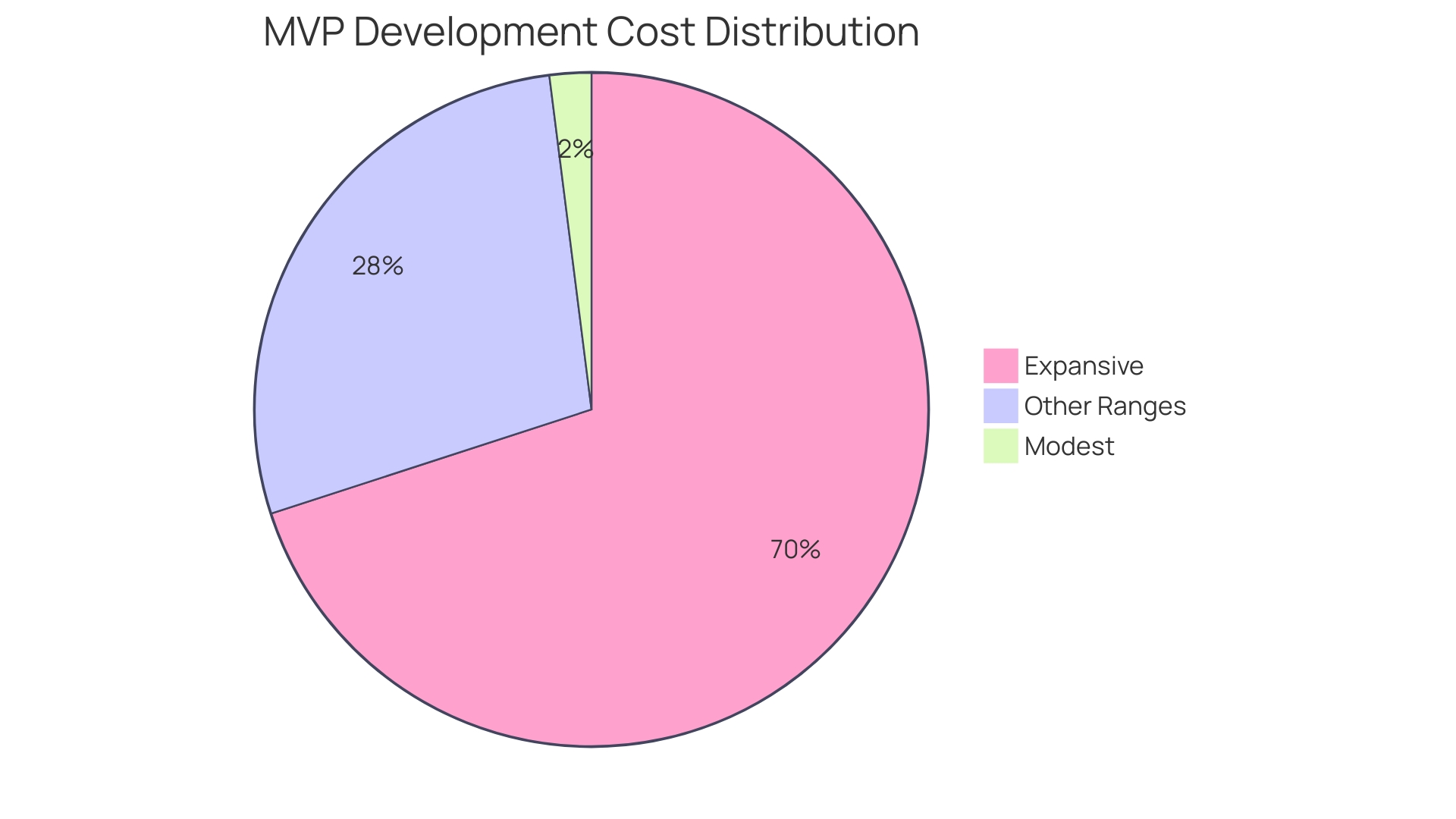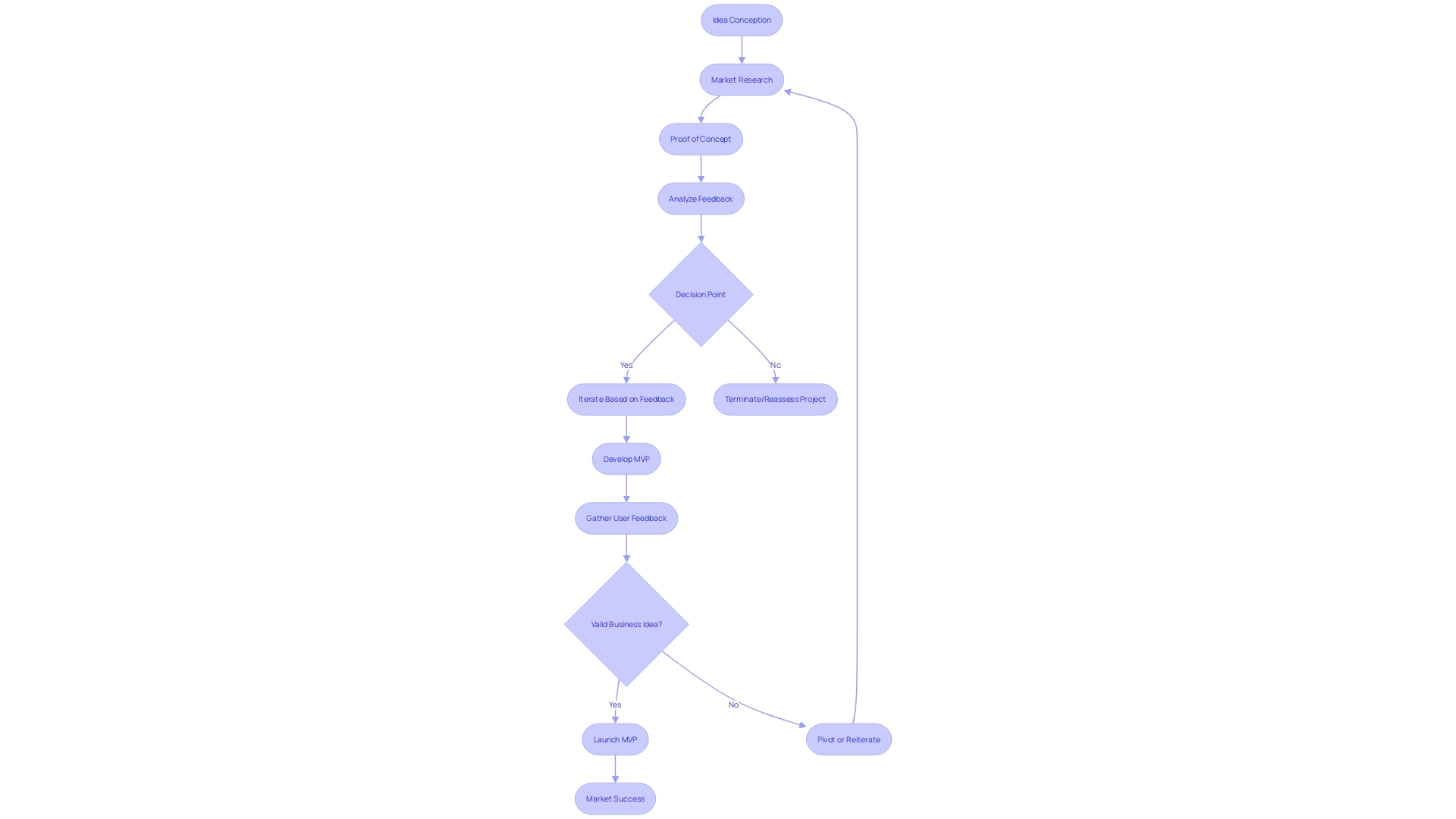Introduction
The cost of developing a Minimum Viable Product (MVP) can vary greatly depending on several factors. These factors include the complexity and requirements of the project, the chosen operating system, the scope of work and the timeline, design complexity and iterations, platforms and integrations, stakeholder maturity and market understanding, as well as the decision between third-party and custom development.
Understanding these factors is crucial for budgeting and planning the development of an MVP effectively. In this article, we will explore each of these factors in detail to provide you with a comprehensive understanding of what influences the cost of MVP development.
Factors Affecting MVP Development Cost
The financial considerations for developing a Minimum Viable Product (MVP) are multifaceted and can be influenced by numerous factors that are crucial to consider during the planning and budgeting phase. The cost to bring an MVP to life can range from a modest $10,000 to an expansive $350,000 or beyond, depending on the complexity and requirements of the project. The mobile app landscape, for instance, is a testament to the varying development costs.
As Statista reports, the surge in mobile app downloads is set to generate over $613 billion in revenue by 2025, highlighting the lucrative potential of investing in mobile app development. In this realm, understanding whether your MVP serves as a solution to a specific problem or acts as a commodity enhancing convenience is vital. This distinction can significantly influence the development trajectory and, consequently, the cost.
A use case exemplifying this could be an entrepreneur needing an app that consolidates the accounting of multiple businesses. Such a specialized solution would likely incur different costs compared to an app intended for broader, more general use. Moreover, the operating system chosen for the app can play a pivotal role in user acquisition costs, with Android traditionally being less expensive than iOS due to its larger global user base, especially in regions like Latin America, Europe, and Asia.
Consequently, the operating system selection not only impacts the development process but also the marketing budget post-launch. The dynamism of companies like Amazon, which began as a simple online bookstore and evolved into an e-commerce titan, serves as a reminder of the importance of foresight in MVP development. Amazon's success underscores the necessity of innovation and a customer-centric approach, aspects that can also dictate the development costs of an MVP, as they set the stage for future scalability and diversification.

Scope of Work and Complexity
Understanding the factors that influence the cost of developing a Minimum Viable Product (MVP) is paramount for ensuring that your digital endeavors remain within budget while achieving your goals. A meticulous analysis of each feature you plan to include is essential.
Start by documenting your intentions, prioritizing the list, and focusing on the core functionalities. This approach aligns with the strategy of the Ford Foundation, which found that their content production outgrow their old content management system's capabilities.
Bedirhan Cinar, Head of Product and Digital Engagement at the foundation, highlighted the need for scalability and adaptability as they transitioned from a single content producer to a more robust workflow. When it comes to mobile app development, the costs can range significantly, from as low as $10,000 to upwards of $350,000, influenced by various factors, including the app's complexity, the number of features, and the chosen operating system.
Statista reports predict a surge in global mobile app revenue, exceeding $613 billion by 2025, underscoring the importance of strategic investment in mobile app development. The operating system plays a crucial role, with the cost to acquire Android app users being significantly lower than iOS users, primarily due to the higher volume of Android users globally. Incorporating the essential features in an MVP while maintaining clarity of purpose is a critical step. As one expert puts it, "Before building, you need to define: How the product will be used, what's at the core, and how often specific features will be used." This foundational understanding ensures that the MVP not only addresses a real problem or need but also remains manageable and cost-effective to develop.
Time of Development and Timeline
The duration of the development cycle for a Minimum Viable Product (MVP) is a pivotal factor influencing its cost. A condensed timeline necessitates a surge in resources and manpower, which in turn, escalates the financial investment required.
For instance, if you need to rapidly create a tool to oversee the accounting for multiple businesses, as highlighted in our use case, the urgency commands a premium. Conversely, allowing for a more extended development period can afford a measured approach, optimizing resource allocation and potentially diminishing costs.
It's essential to meticulously outline and prioritize the MVP's functionalities, focusing on core aspects and frequency of usage to ensure a streamlined, cost-effective development process. In the digital realm, where mobile apps are indispensable, understanding the delicate balance between speed and budget is crucial. Each choice, from ideation to deployment, carries weight in the financial outcome of your MVP project.

Design Complexity and Iterations
Understanding that the cost of developing a Minimum Viable Product (MVP) is not static, it's essential to acknowledge the intricacies involved in design and iteration. Design systems like Material-UI and Chakra-UI showcase the balance between versatility and specificity, illustrating how a tailored design system for your suite of applications can shift the focus and potentially increase complexity.
As complexity elevates, so does the necessity for refinement through iterations, which can extend the timeline and inflate costs. A pivot to mobile app development reveals similar cost implications.
Statista forecasts mobile app revenue to surge past $613 billion by 2025, affirming the significance of investing in mobile app development. Costs can range from $10,000 to $350,000, influenced by a myriad of factors, including design complexity and required iterations.
Moreover, the operating system plays a role in user acquisition costs, with Android traditionally costing less than iOS due to a broader user base in regions like Latin America, Europe, and Asia. This underlines the importance of strategic planning in the early stages of development, as highlighted by the quote, 'Tidy First? What when "Later" has a bunch of advantages.' It's imperative to weigh all constraints, not merely those that are convenient, to effectively manage the MVP development costs.

Platforms and Integrations
Deciding on the right platforms and integrations for your Minimum Viable Product (MVP) is critical, as it has a direct impact on your cost structure. The complexity of integrating various platforms can significantly drive up development costs. For instance, the cost of mobile app development, a common type of MVP, can range from $10,000 to $350,000 or more.
This variance largely depends on specific business needs and the factors influencing development costs. According to Statista, with the expected revenue from global mobile app downloads projected to hit over $613 billion by 2025, the investment in mobile app development is not only about meeting consumer demands but also about capitalizing on a lucrative market. Furthermore, user acquisition costs differ based on the operating system, with Android traditionally being less expensive than iOS due to a higher global user volume, particularly in regions like Latin America, Europe, and Asia.
When scoping your project, consider the frequency of tool usage by end-users and the appropriate unit of measure for cost analysis. Agencies are increasingly adopting hybrid billing models, which blend various pricing strategies to accommodate the diverse nature of digital projects. This flexible approach to billing could influence your platform and integration choices to ensure they align with both your budget and strategic goals.

Stakeholder Maturity and Market Understanding
When considering the creation of a Minimum Viable Product (MVP), the maturity and market insight of stakeholders play a pivotal role in cost determination. A well-informed stakeholder with a precise vision can significantly streamline the MVP development, as seen in the use case where a business owner requires an application to manage the accounting for multiple businesses.
This clarity in purpose can lead to a more efficient development process and potentially lower costs. On the other hand, stakeholders lacking a clear understanding of their market may face additional expenses due to the necessity of in-depth requirement gathering and subsequent adjustments.
This scenario underscores the importance of differentiating whether the MVP serves as a solution to a specific problem or simply as a commodity that enhances convenience. Furthermore, a comprehensive analysis of each feature's viability and prioritization is essential, ensuring that the MVP encapsulates only the fundamental functionalities, thereby adhering to its core purpose and usage frequency. This strategic approach can not only clarify the MVP's objective in a single sentence but also provide a blueprint for what the product will look like and how it will function, ultimately influencing the cost of development.
Third-Party vs. Custom Development
Deciding on the development method for a Minimum Viable Product (MVP) requires weighing the advantages of pre-built third-party solutions against the benefits of custom development. Pre-built solutions can be cost-effective and time-efficient owing to their ready-to-integrate functionalities.
For instance, if a tool's frequency of use is high, leveraging third-party solutions could streamline the process and reduce expenses. However, custom development is invaluable for tailoring the product to exact specifications, which can be critical when the project scope is well-defined and the end-user's needs are specific.
While this may require a more substantial investment, it offers unparalleled flexibility, allowing for a product that is meticulously aligned with the envisioned use case. Moreover, the choice between using a waterfall methodology, with its structured and sequential phases, and the more adaptable, iterative approach of agile development can significantly impact the project's cost and timeline. It is essential to analyze each feature, prioritize essential functionalities, and ensure the MVP aligns with its intended purpose concisely articulated. This strategic planning is crucial in determining the development path that will provide the most value for the investment.

Estimate Examples and Case Studies
When delving into the realm of MVP development, understanding your position as either a solution to a specific problem or a commodity that enhances life's convenience is vital. Consider an entrepreneur overseeing multiple businesses seeking an application to aggregate their accounting processes.
This scenario underscores the importance of identifying whether the MVP will solve a critical issue or simply add value. To navigate this, one must meticulously outline all proposed features, prioritizing only those that are indispensable; an MVP should encapsulate the core functionalities required to serve its purpose.
This process of prioritization and clarification is aptly summarized by the principle that a well-articulated MVP can be described succinctly in a single sentence. Furthermore, industry experts suggest sketching and visualizing the MVP to ensure clarity and focus on the essential elements. Such preparation not only aids in the conceptualization but also sets the foundation for more accurate cost estimates, as it aligns expectations with the practical scope of development.

Conclusion
In conclusion, the cost of developing a Minimum Viable Product (MVP) can vary greatly depending on several factors. These factors include the complexity and requirements of the project, the chosen operating system, the scope of work and timeline, design complexity and iterations, platforms and integrations, stakeholder maturity and market understanding, as well as the decision between third-party and custom development. Understanding these factors is crucial for budgeting and planning the development of an MVP effectively.
For instance, distinguishing whether your MVP serves as a solution to a specific problem or acts as a commodity enhancing convenience can significantly influence the development trajectory and cost. The operating system chosen for the app also plays a pivotal role in user acquisition costs. Android tends to be less expensive than iOS due to its larger global user base.
This consideration impacts not only the development process but also the marketing budget post-launch. Additionally, factors such as scope of work and complexity, time of development and timeline, design complexity and iterations, platforms and integrations, stakeholder maturity, market understanding, and the choice between third-party and custom development all contribute to shaping the overall cost of MVP development. To ensure cost-effective development, it is essential to prioritize core functionalities while maintaining clarity of purpose.
Meticulous planning that aligns expectations with practical scope can lead to more accurate cost estimates. Ultimately, strategic investment in mobile app development is crucial given its projected revenue surge in the coming years. By carefully considering these factors and making informed decisions throughout the MVP development process, businesses can optimize costs while creating a successful product that meets market demands.





